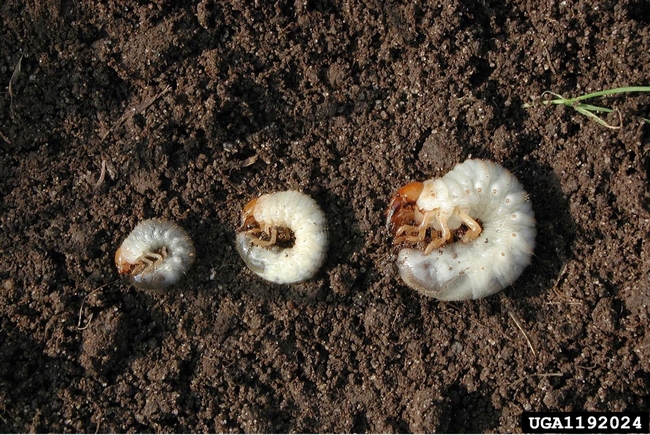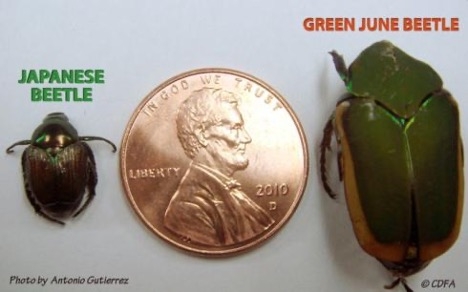You may be noticing white grubs in your compost piles, lawns, or garden beds. These white, c-shaped critters can be 1/4 inch long or 2 inches long, depending on the species. White grubs are the larvae of some scarab beetles, and though many of them can cause damage to our landscapes, not all of them do.
There are three species that feed on the roots of grasses, making them a potential pest to lawns when in high numbers. These species may also be found in landscape or garden beds that are near grassy areas or were recently converted from grassy areas. Compare the size of white grubs you may find, as some species are much larger or smaller than others and can help you determine which is present.
- The larvae of masked chafer beetles are 1 inch long with dark heads and six legs. Adult beetles are golden brown and can be seen flying around in the evening hours.
- Billbug larvae are 3/8 inch long, also with dark heads andwhitebodies, but these grubs lack legs. Adults are brown weevils.
- Black turfgrass ataeniusls larvae are 1/4 inch long– much smaller than masked chafer grubs. Adult beetles are black and shiny.
One of the largest species of white grubs you might find in California are of the green fruit beetles, also known as figeater beetles or June beetles. The grubs of these beetles can be up to 2 inches long and are commonly found in compost piles, or near ripe and rotting fruits– which they feed on. These grubs, however, won't usually damage your landscape or garden plants. The adults are very large, metallic green beetles that are often mistaken for the invasive Japanese beetle, which is much smaller and, for the most part, is not found in California.
In most cases, the presence of white grubs does not require treatment and populations of 6 or less per square foot can be tolerated. If you notice them in your garden beds, they can be hand-picked and killed. Some may choose to feed them to their backyard chickens or leave them out for the birds. When infestations of grass-feeding white grubs occur, the lawn may feel soft and spongy, sometimes able to be rolled back like carpet. You may also notice animals like raccoons and moles digging in your yard, looking to snack on some white grubs.
To learn more about identifying and managing white grubs, see Pest Notes: Lawn Insects.

